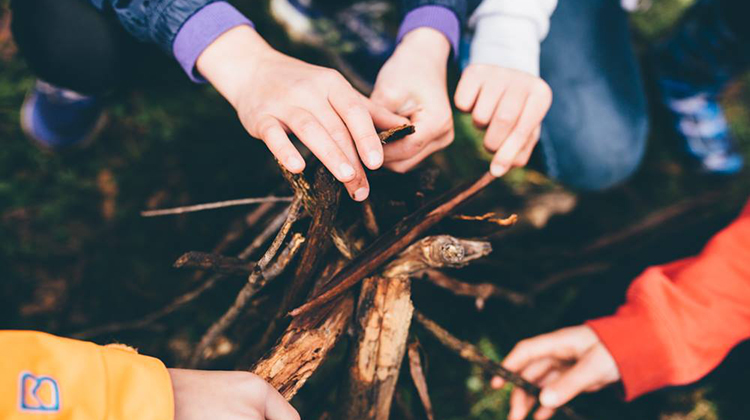Breaking Down the Barriers to Nature Based Play

Despite its benefits, nature-based play and learning in Australian schools still faces barriers. The packed curriculum is one, teachers are under increasing pressure to do more with the same resources and meet a growing amount of compliance.
But nature-based play is finding a way through and researchers have found that simple processes let kids access the mental and physical benefits of learning outside.
University of South Australia researcher Nicole Miller conducted in-depth interviews of South Australian educators in both rural and urban primary schools to discover how nature-based play and learning was situated in their schools.
“They were consistent about the benefit – to learning, enjoyment, and creativity – that they see flowing from their nature-based practice. They are harnessing these benefits by integrating and embedding nature-based learning into the school day,” Miller says. “The factors which deter educators from bringing nature into learning for cognitive and sensory enrichment are felt keenly.”
The barriers to teaching in nature will be familiar to most, one teacher interviewed said that, “The curriculum is so crowded and the pressure on teachers is phenomenal. Teachers and principals are under a lot of pressure to create data.” A principal interviews agreed saying, “The curriculum and the demands are ridiculous.”
That said integrating nature-based play and learning into teaching was still possible but support and training are needed to build educators’ knowledge and confidence.
“It’s having that confidence to think, I’m still covering curriculum, still doing what I need to do, but I’m just doing it in a different creative way,” one educator, who has a dual-role as a teacher and principal, said.
For those teachers who do consistently use nature to enhance learning, the positive impact on their students is a consistent source of motivation. One school principal spoke of a transformative effect once learning is taken outside. “There are some children who just do not cope in classrooms anymore. When they get out into the outdoor space they can demonstrate their creativity, their knowledge, their communication because they are not under academic pressure. We see very little negative behaviour in our nature play space.” Another teacher spoke of a child, usually too afraid of getting the wrong answer to raise their hand, who, when outside, is “different altogether, completely different.”
The research showed that a champion in a school, an advocate for nature-based play and learning, is key to building engagement with nature-based practice. One deputy principal advised schools to, “Find a key staff member, someone who is really passionate about it who is prepared to take a lead role, find out information and access grants.”
Having a staff member that is committed to nature-based learning is pivotal, the researchers discovered that when a nature champion at a school departed, behaviour in the nature spaces became more negative, the children became less intentional in their use of the space and took to stick-fighting.
“The findings of our study have many practical implications, as they draw out what educators find to be the main barriers, as well as the enablers that help overcome the barriers,” says Miller. “Supportive school leadership and the important role of teachers who become nature-based play and learning ‘champions’ stand out as powerful enablers.”
Principals and councils can assist in finding ways to use nature-based learning to deliver curriculum, easing competing demands on time. One interviewee told the researchers that, “In staff meetings we often discuss how are we doing maths outside and how are we doing literacy outside, which just inspires us a little bit more.”
All the teachers who the researchers interviewed work at schools with purpose-built nature-play spaces. But, where some spaces were expensive and professionally designed, others were designed and constructed by members of the school community.
“Teachers and principals recognise that the setting does not need to be perfect,” says Miller. “South Australian educators place a lot of importance on these spaces. That is just true in the case of a simple set-up with some bushes, tyres and a free-form sand pit, or an artificial creek dug by volunteers, or an elaborate, professionally built space with everything you could imagine."
Study participants were keen to share the message that educators need not be afraid of trying nature-based methods out. “Nature could be just something that’s outside your classroom, and you can use it every day. It is there to help you teach – use it as a tool rather than a hindrance,” one teacher advised.
See: Nicole C Miller, Saravana Kumar, Karma L. Pearce, and Katherine L. Baldock (2022)"Primary School Educators’ Perspectives and Experiences of Nature-Based Play and Learning and Its Benefits, Barriers, and Enablers: A Qualitative Descriptive Study" International Journal of Environmental Research and Public Health 19, no. 6: 3179. https://doi.org/10.3390/ijerph19063179
Image by Jason Tyndall